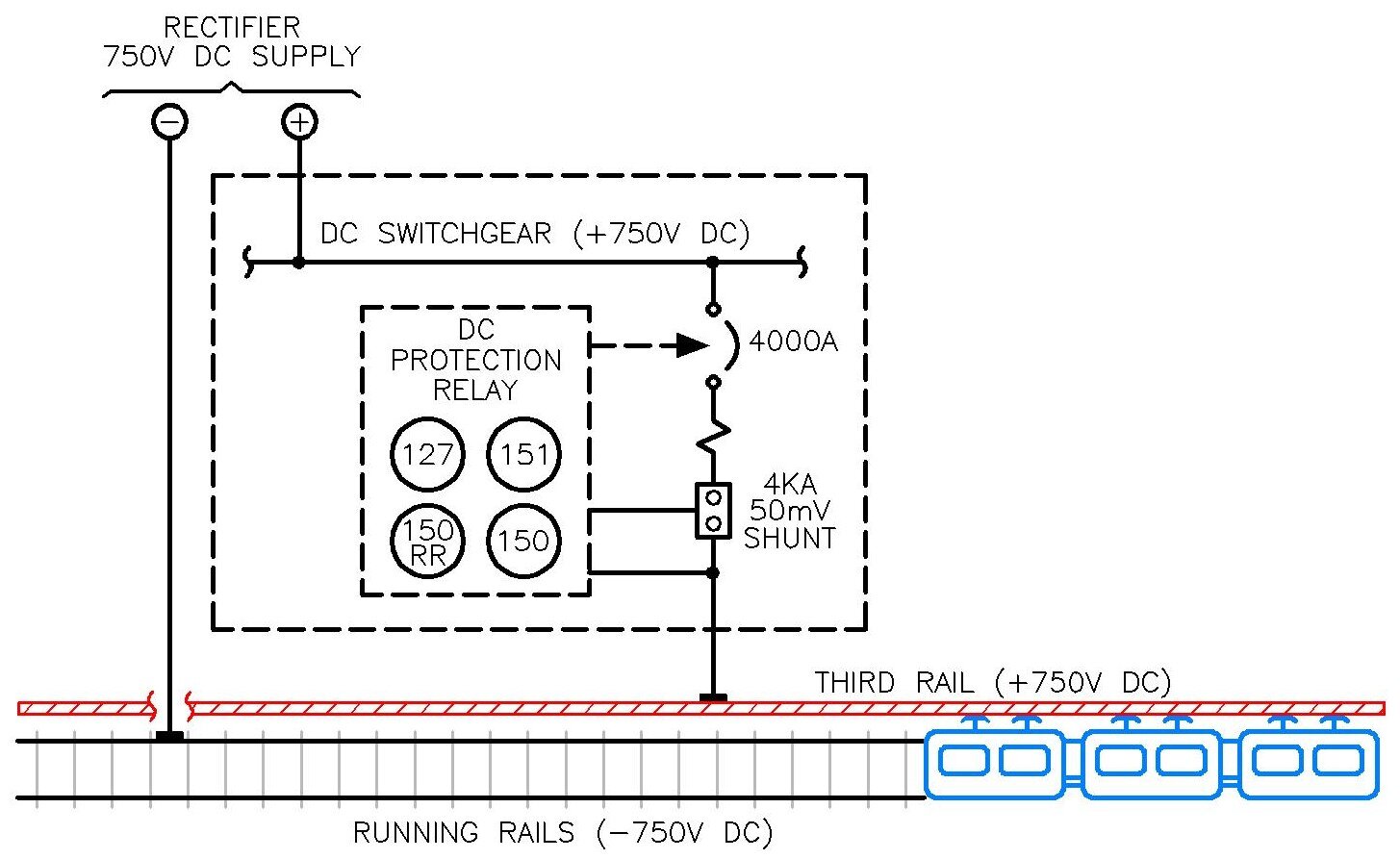How to Ensure the Electrical System Integrity of an Urban Metro Rail System
/Electricity can provide power for trains to create an effective city-wide mass transportation system. An important part of this system is the traction power substations whose function is to convert the incoming commercial electrical supply to a form usable by trains via overhead catenary or an energized third-rail.
Overview of Direct Current (DC) Traction Power Substations
Most urban metro systems in North America operate between 500V and 750V DC using the third-rail configuration. The third-rail acts as the positive supply bus for the DC system, while the running rails act as the negative return bus. Consequently, a metro-car is energized from these positive and negative buses. A DC traction power substation establishes the electrification of the positive and negative buses of the railway system and its track range can span up to several miles. This philosophy, which is often referred to as “extra heavy-duty” traction power, consists of an energized third-rail running directly adjacent to the running rails for the entire track segment.
Four Key Elements of a Direct Current (DC) Protection System
When designing a traction power substation for a metro rail system, keep these key DC protective functions in mind:
Undervoltage Protection (ANSI-127) to protect against abnormal or loss of DC voltage during system operation.
Time Overcurrent Protection (ANSI-151) to protect against long-time and short-time overcurrent events as well as other corresponding thermal considerations.
Instantaneous Overcurrent Protection (ANSI-150) to protect against overcurrent events associated with short circuit faults in the instantaneous time period. This is often a direct-acting trip device integral to the breaker assembly with settings of 100% to 400% of the breaker frame rating.
Rate-of-Rise Overcurrent Protection (ANSI-150RR) to protect the electrical system using the rate of increase in the current level as a function of time.
To Trip or Not to Trip? The Importance of Rate-of-Rise Overcurrent Protection
Since an individual traction power substation can supply a railway track for several miles, you must protect the entire track segment. The short circuit current near to, and far from the traction power substation can differ significantly. Furthermore, a distant fault event can be in the same range of current as the inrush associated with a nearby train start. Tripping incorrectly during a train start may shut down the operation of the railway system and a failure to interrupt a distant fault condition may cause significant damage to railway system components.
If you use specialized ANSI-150RR protection, controls, and logic for monitoring the current rate of rising (di/dt), you can achieve the best of both worlds to protect against distant fault conditions and allow you to continuously operate during inrush conditions. When configured properly, the rate of the rising relay will successfully distinguish between the slower rise in current for a train start and the faster rate of rising for a system fault. This will work even though the magnitude of currents between close-in and distant faults can vary considerably.
It is essential to have a proper electrical system to support a railway system. We make specific recommendations to improve your protection and reliability which will save you money. If you would like to know more, feel free to call us at (240) 582-3900 or email us at info@helioselectric.net.
To learn about our other unique solutions that can enhance your electrical facilities, click here.





